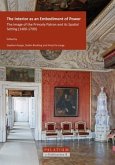Understanding madness as a social construction, throughout Western history we have seen the various ways used to segregate those considered unproductive and with deviant behaviour, among which mental institutions are a significant example. In this universe, the Neuro-psychiatric Children's Hospital (HNPI), located in the state of Minas Gerais (Brazil), is an archetype whose materiality presents discourses of power. Considering the HNPI as a superfact, in this work I sought to understand, by reading its spatiality, the strategies of disciplining, controlling and curing exercised on the children interned there, many of whom did not even suffer from a mental disorder. Possible experiences and reactions on the part of the children are also addressed, as well as the new uses exercised in this building, which currently houses the Luiz Estrela Common Space.
Bitte wählen Sie Ihr Anliegen aus.
Rechnungen
Retourenschein anfordern
Bestellstatus
Storno








